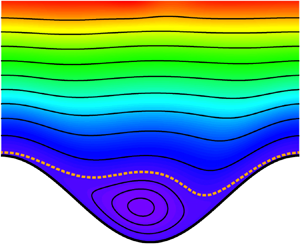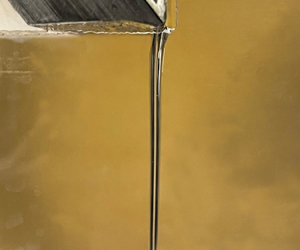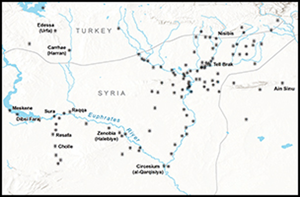Refine listing
Actions for selected content:
1417514 results in Open Access
Hydrodynamic roughness induced by a multiscale topography
-
- Journal:
- Journal of Fluid Mechanics / Volume 974 / 10 November 2023
- Published online by Cambridge University Press:
- 26 October 2023, A16
-
- Article
- Export citation
EVENTUAL POSITIVITY AND ASYMPTOTIC BEHAVIOUR FOR HIGHER-ORDER EVOLUTION EQUATIONS
- Part of
-
- Journal:
- Bulletin of the Australian Mathematical Society / Volume 109 / Issue 1 / February 2024
- Published online by Cambridge University Press:
- 26 October 2023, pp. 165-167
- Print publication:
- February 2024
-
- Article
-
- You have access
- HTML
- Export citation
Artificial intelligence and increasing misinformation
-
- Journal:
- The British Journal of Psychiatry / Volume 224 / Issue 2 / February 2024
- Published online by Cambridge University Press:
- 26 October 2023, pp. 33-35
- Print publication:
- February 2024
-
- Article
-
- You have access
- HTML
- Export citation
Are Online Simulations for Radiation Emergency Medical Preparedness Less Effective in Teaching Than Face-to-Face Simulations?
-
- Journal:
- Disaster Medicine and Public Health Preparedness / Volume 17 / 2023
- Published online by Cambridge University Press:
- 26 October 2023, e520
-
- Article
- Export citation
On the shapes of liquid curtains flowing from a non-vertical slot
-
- Journal:
- Journal of Fluid Mechanics / Volume 974 / 10 November 2023
- Published online by Cambridge University Press:
- 26 October 2023, A18
-
- Article
- Export citation
‘Unprecedented injustice’: Digitalisation and the perceived accessibility of childcare benefits
-
- Journal:
- Journal of Social Policy / Volume 54 / Issue 4 / October 2025
- Published online by Cambridge University Press:
- 26 October 2023, pp. 1320-1339
- Print publication:
- October 2025
-
- Article
-
- You have access
- Open access
- HTML
- Export citation
Catholic Clergy of Italian Nationality in the British Middle East, 1939–1944
-
- Journal:
- The Journal of Ecclesiastical History / Volume 75 / Issue 3 / July 2024
- Published online by Cambridge University Press:
- 26 October 2023, pp. 522-542
- Print publication:
- July 2024
-
- Article
-
- You have access
- Open access
- HTML
- Export citation
FLM volume 973 Cover and Front matter
-
- Journal:
- Journal of Fluid Mechanics / Volume 973 / 25 October 2023
- Published online by Cambridge University Press:
- 26 October 2023, p. f1
-
- Article
-
- You have access
- Export citation
The Gender Gap in Issue Attention and Language Use within a Legislative Setting: An Application to the Italian Parliament (1948–2020)
-
- Journal:
- Politics & Gender / Volume 20 / Issue 1 / March 2024
- Published online by Cambridge University Press:
- 26 October 2023, pp. 182-211
-
- Article
-
- You have access
- Open access
- HTML
- Export citation
Fit and Well-Being
-
- Article
-
- You have access
- Open access
- HTML
- Export citation
Bregman distance regularization for nonsmooth and nonconvex optimization
-
- Journal:
- Canadian Mathematical Bulletin / Volume 67 / Issue 2 / June 2024
- Published online by Cambridge University Press:
- 26 October 2023, pp. 415-424
- Print publication:
- June 2024
-
- Article
- Export citation
A wall or a road? A remote sensing-based investigation of fortifications on Rome's eastern frontier
- Part of
-
- Article
-
- You have access
- Open access
- HTML
- Export citation
Associations of free, bioavailable and total 25-hydroxyvitamin D with neonatal birth anthropometry and calcium homoeostasis in mother–child pairs in a sunny Mediterranean region
-
- Journal:
- British Journal of Nutrition / Volume 131 / Issue 5 / 14 March 2024
- Published online by Cambridge University Press:
- 26 October 2023, pp. 801-808
- Print publication:
- 14 March 2024
-
- Article
-
- You have access
- Open access
- HTML
- Export citation
Nutritional and health benefits and risks of plant-based substitute foods
- Part of
-
- Journal:
- Proceedings of the Nutrition Society / Volume 84 / Issue 1 / February 2025
- Published online by Cambridge University Press:
- 26 October 2023, pp. 110-123
-
- Article
- Export citation
Settling versus mixing in stratified shear flows
-
- Journal:
- Journal of Fluid Mechanics / Volume 974 / 10 November 2023
- Published online by Cambridge University Press:
- 26 October 2023, R1
-
- Article
-
- You have access
- Open access
- HTML
- Export citation
Concealing Martial Violence
-
- Journal:
- Enterprise & Society / Volume 25 / Issue 1 / March 2024
- Published online by Cambridge University Press:
- 26 October 2023, pp. 27-38
- Print publication:
- March 2024
-
- Article
-
- You have access
- Open access
- HTML
- Export citation
Economic voting goes local: evidence from the Italian regions
-
- Journal:
- Italian Political Science Review / Rivista Italiana di Scienza Politica / Volume 54 / Issue 1 / March 2024
- Published online by Cambridge University Press:
- 26 October 2023, pp. 54-69
- Print publication:
- March 2024
-
- Article
- Export citation
Protecting Our (White) Daughters: U.S. Immigration and Benevolent Sexism
-
- Journal:
- Politics & Gender / Volume 20 / Issue 2 / June 2024
- Published online by Cambridge University Press:
- 26 October 2023, pp. 296-317
-
- Article
-
- You have access
- Open access
- HTML
- Export citation
COVID-19 Direct Relief Payments and Political and Economic Attitudes among Tertiary Students: A Quasi-Experimental Study – CORRIGENDUM
-
- Journal:
- PS: Political Science & Politics / Volume 57 / Issue 2 / April 2024
- Published online by Cambridge University Press:
- 26 October 2023, p. 327
- Print publication:
- April 2024
-
- Article
-
- You have access
- Open access
- HTML
- Export citation
Stable orientations of small-scale floating cylinders
-
- Journal:
- Journal of Fluid Mechanics / Volume 974 / 10 November 2023
- Published online by Cambridge University Press:
- 26 October 2023, A19
-
- Article
- Export citation











